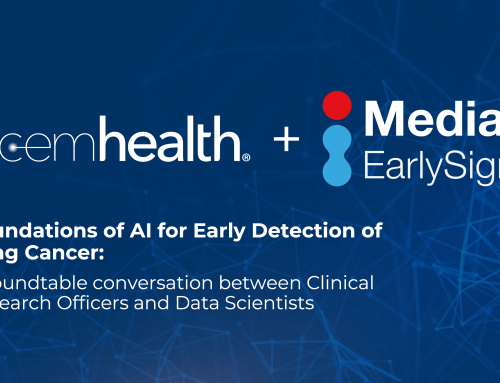
AI-Enabled Risk Stratification Does Not Substitute for Recommended Colorectal Cancer Screening
We recently spoke with a GI physician leader who reminded us that AI-enabled risk stratification does not substitute for recommended colorectal cancer (CRC) screening. This was especially important to him given that he owns responsibility for key quality metrics, and running patient records through a predictive AI model will not replace accepted CRC screening methods.
So how does AI-enabled early detection of lower GI disorders instead complement CRC screening methods?
The Role of AI-Enabled Risk Stratification in Colorectal Cancer (CRC) Screening
By analyzing patient data, we know we can identify those at higher apparent risk for lower GI disorders and prioritize them for screening colonoscopies. This approach is not only effective, but it also makes sense for several reasons. Let’s dive in and explore the benefits and limitations of risk stratification.
First, risk stratification allows us to target our screening efforts more effectively. By using AI technology, we can analyze patient data to identify those who are at higher apparent risk for lower GI disorders such as colorectal cancer and its precursors. This means we can put additional efforts into screening outreach for the patients most likely to benefit from intervention. [1]
Second, risk stratification can help us detect adenomas and colorectal cancer at an earlier stage. Removal of polyps and advanced adenomas prevents most progression to CRC. And when CRC is caught at the earliest, localized stage, the five-year survival rate for colon cancer exceeds 90%. [2]
Third, risk stratification can help us use our resources more efficiently. By targeting our screening efforts, we can make the most of our limited clinical resources and provide the best possible care to our patients. This means that we can provide more personalized prevention at scale, using real-world patient data and advanced analytics to flag those at higher statistical risk of having undetected lower GI disorders. [3]
But Again, AI-Enabled Risk Stratification Cannot Replace Traditional Screening
While risk stratification can help us identify and prioritize patients who are at higher statistical risk, it does not replace regular screening for all eligible patients. Risk stratification is not a diagnostic tool. According to the American Cancer Society, adults aged 45 and older should get screened for colorectal cancer regularly. [4]
However, by combining risk stratification with comprehensive screening strategies, we can improve our ability to prevent, detect, and treat lower GI disorders such as colorectal cancer in our patient population.
Looking At The Effectiveness of Combining AI Technology and Traditional Screening
To illustrate how risk stratification can make screening more effective, let’s consider a hypothetical scenario. Suppose we have 10,000 patients eligible for CRC screening. The prevalence of colorectal cancer in this age group is about 0.20-0.36%, which means that we expect to find approximately 20-36 cases of colorectal cancer among these patients.
Now, suppose we use clinical AI tool to stratify these patients based on their apparent risk. The tool assigns each patient a risk score and flags the top 3%, yielding 300 flagged patients. Among this flagged group, if the projected 4.3% present with CRC, that’s about 13 patients.
If we prioritize screening colonoscopies for the 3% of flagged patients, we will detect 30-65% of all patients with cancer. That is how, by focusing extra effort to screen flagged patients, we can save time, money, and resources, while improving the chances of finding CRC at an earlier stage.
Let’s Start Using More Technology to Fight Colorectal Cancer
In conclusion, risk stratification for prioritizing screening colonoscopies makes sense even if patients who are not flagged as high risk are not considered to have undergone standard colorectal cancer screening. By using AI technology to target our screening efforts, we can detect colorectal cancer at an earlier stage, use our resources more efficiently, and ultimately improve health outcomes for our patients.
